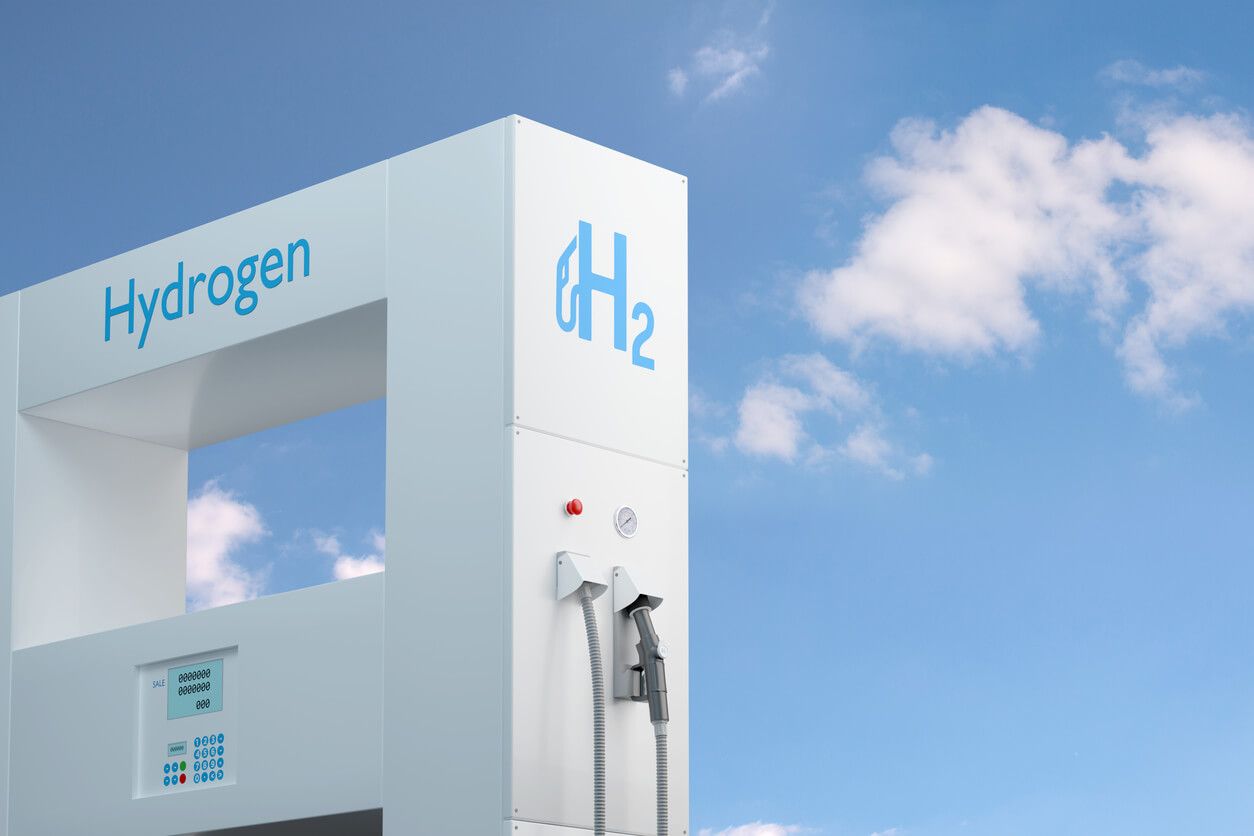Small Scale Hydrogen Refueling: What to Know About Compact Stations

Hydrogen fuel is here to stay. Global demand for hydrogen was around 95 million tonnes in 2022 and is expected to reach 150 million tonnes by 2030, per the Global Hydrogen Review 2023.
Looking ahead, the future of hydrogen power will become more about size. On one hand, hydrogen is getting bigger, specifically in terms of hydrogen mobility in heavy-duty transport applications. On the other hand, it’s also getting smaller, in terms of compact hydrogen fuel cell recharging stations.
Below, we’ll break down the key features that drive innovation in these small-scale hydrogen refueling systems and solutions to the challenges facing them.
Key Features of Compact Hydrogen Refueling Stations
As hydrogen fuel continues to gain popularity and an increasing number of consumers show interest in exploring it, efficient solutions will be best positioned to meet growing demand. To that end, compact systems with the following features will lead the way.
1. Compact Design Considerations
Compact hydrogen refueling stations' most important design features are their size and form factor. The stations are cuboid structures with minimal physical footprints. Top-line models are often under 10m² without compromising on hydrogen fuel storage, compression, and dispensation functions for consumer-grade hydrogen fuel cell electric vehicles (FCEVs).
These features make smaller form-factor systems ideal for urban environments. They also demand efficiency and safety within limited space, with assurance coming from various regulatory initiatives and certifications these systems typically require (see below).
2. Leading Technology and Equipment
Beyond the small form factor, compact hydrogen refueling stations also feature cutting-edge technology to deliver hydrogen fuel efficiently. Typical technical features include:
- Dedicated stacks of electrolyzers to facilitate swift fuel production
- Varied deliveries at low voltage (slower fill) or higher voltage (faster fill)
- Customizable hydrogen production (for selecting between hydrogen colors)
Another critical aspect here is capacity. One of the most promising developments for the future of energy is hydrogen’s role in the infrastructure sector. States across the US are implementing buses and other mass transit vehicles powered by hydrogen fuel cells. Facilitating refueling across wider territories with compact units will be a boon to all parties involved.
3. Maximum Environmental Impact
The unique properties of hydrogen, namely its lightness and energy density, make it one of the world's most efficient and sustainable energy sources. Technology that makes harnessing these properties easier or more widely applicable has the most potential to benefit the planet.
In particular, efficient hydrogen refueling is key to renewable energy resilience.
Compact hydrogen refueling systems are ideal for urban environments, where space is valuable, so they extend these benefits to some of the most densely populated contexts in the US and elsewhere. At scale, this will translate to greater sustainability and environmental impacts.
Implementation Challenges and Solutions
Despite the many reasons hydrogen fuel cells make sense for so many parts of the economy, there are challenges impeding the growth of hydrogen fuel infrastructure, including compact refueling stations. Three of the biggest challenges, and their solutions, are as follows.
1. Site Selection
A major challenge in implementing hydrogen refueling stations, even compact ones, is choosing a site where the degree of hydrogen usage warrants a charging solution. Companies need to pick places where hydrogen is used, but there is a relative lack of efficient refueling availability.
One of the best ways to overcome this challenge is to research carefully and anticipate specific locations and communities that would benefit from the first—or additional—compact systems.
For example, the California Energy Commission maintains an interactive map of hydrogen refueling stations in California. Analyzing by country and system type shows where hydrogen enjoys the most uptake already (i.e., Los Angeles, 27 stations), along with proximal areas that may be ideal targets for new developments (i.e., San Bernardino, 4 stations; Ventura, 3 stations).
2. Regulatory Compliance
Companies involved in hydrogen refueling production and adoption must ensure their stations and practices abide by applicable frameworks. Some of the most common include:
- International Organization for Standardization (ISO) compliance
- Official listing or certification from Underwriters Laboratories (UL)
- Conformite Europeenne (CE) compliance with EU standards
- Intertek’s Electrical Testing Laboratories (ETL) listing
The web of regulatory guidelines that stakeholders in the hydrogen refueling industry need to watch out for is complex. However, the Fuel Cell and Hydrogen Energy Association maintains the Hydrogen and Fuel Cells Codes and Standards Matrix to help companies navigate these laws.
3. Economic Viability
Finally, there are considerations about economic stability and promise for companies integrating hydrogen energy, including compact refueling systems. These typically involve concerns about cost, such as initial investment and ongoing maintenance, which can be relatively high.
The primary costs associated with hydrogen energy involve:
- Inefficiencies in existing thermochemical and electrolytic methods
- Comparison with traditionally cheaper conventional fuel sources
- Internal competition (or lack thereof) from hydrogen producers
- Supply chain constraints from lacking infrastructure and reach
Fortunately, the technology behind compact hydrogen fueling systems already addresses these underlying cost factors. Greater applicability and accessibility across a broader range of contexts will increase production and competition, which will in turn drive down costs. As demand rises, hydrogen can rival or even surpass traditional fuel in terms of cost efficiency across use cases.
The Future of Hydrogen Fuel
Further advancements in hydrogen uptake will revolve around efficiency and the approaches that drive success in small-scale hydrogen refueling systems. Manufacturers will continue to optimize form factors and include increasingly complex technology in refuelers, driving greater environmental impacts and overcoming the implementation difficulties detailed above.
FASTECH is committed to a future powered by hydrogen and other clean energy sources. We help organizations implement and leverage this technology with Engineering, Procurement & Construction (EPC) services focused on renewable energy infrastructure, like hydrogen fueling.
To learn more about how hydrogen power can help you, contact us today.




